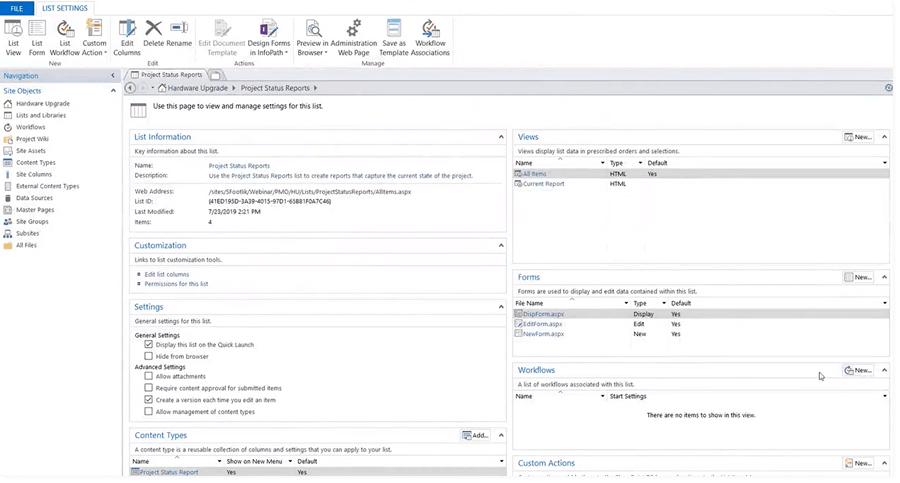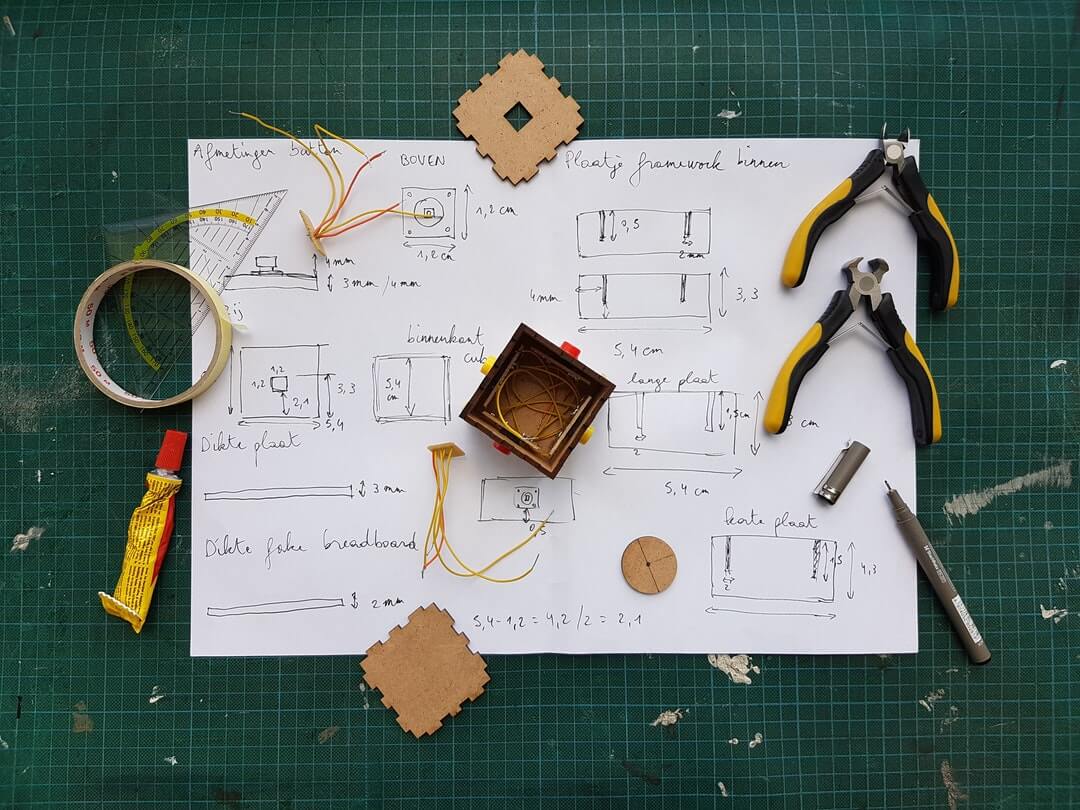SharePoint includes five out-of-the-box workflows for collecting signatures and feedback, managing processes, and getting approval for documents.
Watch: Using SharePoint Workflows for Project Team Collaboration
If you need to create custom or more complex workflows to support project management processes, you’ll need to use Microsoft SharePoint Designer.
This free tool is used to manage SharePoint sites, including lists, libraries, and workflows, without the need to write code.
In this article, you’ll learn how to create a custom workflow for project reporting using SharePoint Designer 2010.
What is SharePoint Designer?
As mentioned above, SharePoint Designer is a free, web-based tool used to manage and enhance SharePoint sites.
SharePoint uses the database application, SQL Server, to store data and configuration information.
SharePoint Designer allows users to work with these files to create data-rich pages, build workflows, and customize the style of a site.
You can download SharePoint Designer 2010 and SharePoint Designer 2013 for free from Microsoft.
Once installed, you’ll need to connect SharePoint Designer with a site in your SharePoint environment.
Access to and usage of SharePoint Designer is based on permission levels. End-users will need to be a member of one of the following groups at the site collection level:
- Site Collection Administrators
- Designers
- Owners.
It’s worth noting that Microsoft is no longer making this application, with support for SharePoint Designer ending in 2026.
SharePoint 2010 and SharePoint 2013-based workflows will continue for on-premises SharePoint 2016 and SharePoint 2019 until 2026.
Organizations using SharePoint 2010 workflows in SharePoint Online should be aware of recent changes:
- From August 1st, 2020, SharePoint 2010 workflows are no longer supported for new Microsoft 365 tenants and will be removed from existing tenants by November 1st, 2020.
- The same dates also apply to SharePoint 2010 workflows created with SharePoint Designer 2013.
- From November 1, 2020, SharePoint 2013 workflows will be turned off by default for new tenants.
Components of SharePoint Designer
SharePoint Designer uses several common elements in a workflow.
- Events: How the workflow is triggered, for example, when a new item is added to a list.
- Conditions: A clause that determines the action, for example, if a new document is uploaded to the library, send an email to the project manager.
- Actions: Tasks that do something, such as send an email. Tasks can be serial (completed one after the other time) or parallel (completed at the same time).
- Variables: A way to store values, like the name of the project manager, in a workflow.
- Steps –SharePoint 2010: Steps are used to group conditions and actions together. The rules in one step are applied before moving to the next step.
- Stages – SharePoint 2013: In SharePoint Designer 2013, stages replace steps.
- Forms: Workflows often use forms to collect information, for example, updating the status of a task.

SharePoint Designer Interface
For BrightWork customers, your Customer Success Architect can create custom workflows using SharePoint Designer as part of your deployment.
BrightWork also includes Workflow Sync, which allows users to apply updates to multiple SharePoint 2010 and Nintex List workflows in a single interface.
Video: Project status reporting using SharePoint Designer 2010
In this training video, you’ll learn how to use SharePoint Designer 2010 to build a custom workflow to:
- Email relevant individuals when a new project status report is posted in a project site.
- Update the project statement with comments from the project status report.

